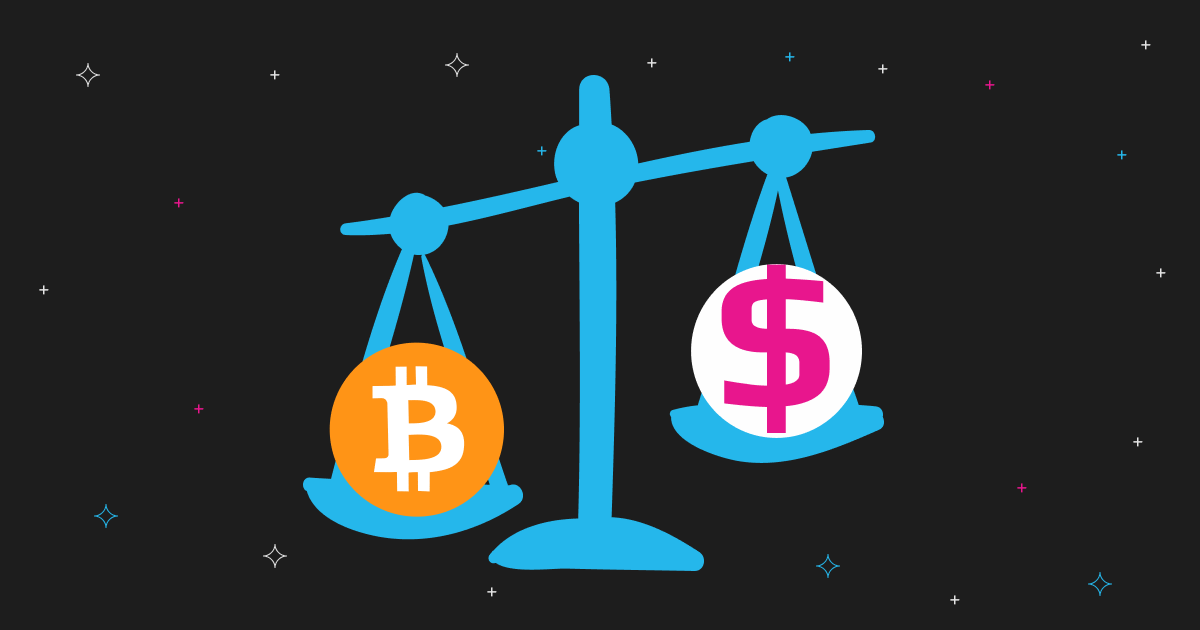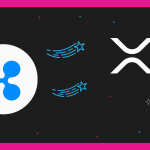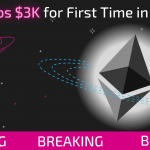Doubters of cryptocurrency have systematically and routinely been proven wrong time after time. However, does that mean mass adoption of cryptocurrency is right around the corner? There are many aspects to look at when discussing this topic, such as institutional investment, regulation and overall utility of cryptocurrencies. For instance, people are largely ditching fiat in favor of crypto for payments. Let’s delve deeper into the question “how does crypto payment work?” and look through the crypto payment coins gaining traction along with BTC.
What is a Crypto Payment?
Cryptocurrency payments are essentially the same as regular online fiat payments, just with a virtual currency such as Bitcoin or Ethereum. The difference between fiat vs crypto payments is how they are paid. Thus, most crypto payments work via a decentralized blockchain, such as Ethereum, and are completely anonymous and decentralized. Hence, they don’t require any third-party such as Paypal to verify the transaction.
Crypto payments are secure and make users avoid double-spending through their consensus mechanism. The consensus mechanism that the payment is running through, either Proof of Work or Proof of Stake, will validate each transaction to ensure the validity and security of the network and the payment.
Nowadays you can already use crypto payments to purchase traditional services or products in the real world. However, they have more use cases such as paying/rewarding events on blockchains like Minting and NFTs or participating in a DeFi protocol governance.
How Does a Crypto Payment Work?
All crypto payments take place on a blockchain, such as the Ethereum blockchain, or Binance Smart Chain, where the transaction is verified and secured by the blockchain’s validators. These validators come in the form of miners or Proof of Stake validators.
Miners utilize the processing power to validate every block. They also are compete with other miners to be the first one to mine the block.
Proof of Stake validators on the other hand use their own staked cryptocurrency, native to the blockchain, to be randomly selected (based on several criteria) to validate the block.
This is the basic process of a crypto payment: block verified, payment validated, transaction processed. As the payment is on a blockchain, it is completely transparent and none can tamper with it once validated, providing anonymity, security and reliability.
Benefits of Crypto Payments
Different blockchains throughout the crypto sphere offer different benefits for crypto payments, however, some of the most common benefits are:
- Borderlessness
Blockchains that host the validation of cryptocurrency payment are completely borderless. Thus, the payment is possible across the world with waiting time only limited to the network. For example, a friend in India can instantly send Bitcoin to his friend in America with minimal fees and no central authority, such as a bank acting as an intermediary. Therefore, users across the world can send each other digital currency with a phone and an internet connection.
- Trustlessness and Permissionlessness
Decentralized blockchains, such as Ethereum, are completely trustless and permissionless which allows any human with an internet connection, regardless of any other factors which may limit their access to traditional finance, to have access to cryptocurrency payments and financial freedom. Cryptocurrency also allows peer-to-peer trading, so that two people to make payments without a third-party in a completely secure and trustless environment.
- Transparency & Speed
Transactions on a blockchain are completely transparent for anyone to see and none can’t revert them. Crypto payments made to businesses create a trustless business environment, empowering to check it and not allowing to chargeback transactions. They are also lightning-quick when compared to backward wire transfers still seen in America, for example. Furthermore, instantaneous payments mean easier international and domestic trade and commerce.
Crypto Payment Coins List
How do crypto payments work for major cryptocurrencies such as BNB, TRX, XRP and XNO.
Crypto Payment Coins: TRX coin
The TRON network is a massive cryptocurrency public blockchain providing lightning-fast payments, with low transaction fees, for multiple of the most used cryptocurrencies such as USDT – a stablecoin tethered to the value of one US dollar. TheTRX coin is the payment for any network fees incurred.
| Weekly Transactions | 20m+ |
| Transactions per second |
30-40 |
|
Transaction Fees |
Virtually Zero |
Crypto Payment Coins: XRP coin
XRP coin is one of the largest cryptocurrencies by market cap, used for payment settlement, asset exchange and other Ripple Lab products. It is the native payment method across the XRP ecosystem.
|
Weekly Transactions |
10m+ |
|
Transactions per second |
12-16 |
| Transaction Fees |
Less than $0.01 |
Crypto Payment Coins: BNB coin
BNB coin is the native currency for the Binance Smart Chain ecosystem, one of the largest cryptocurrency payment methods due to low fees, fast transactions and trustworthy ecosystem, based around the centralized exchange, Binance. However, it is a more centralized ecosystem with 21 validators, based on their Proof of Authority consensus mechanism.
|
Weekly Transactions |
35m+ |
|
Transactions per second |
65-80 |
| Transaction Fees |
$0.30 |
Crypto Payment Coins: XNO coin
XNO coin aims to provide what Bitcoin cannot, providing unrivalled scalability in a truly decentralized network. Moreover, as a payment method, XNO requires no transaction fees and transactions often finanlize within a second.
|
Weekly Transactions |
n/a |
|
Transactions per second |
290+ |
| Transaction Fees |
n/a |
How to exchange crypto payment coins?
Swapzone aggregates the best exchange rates for over 600 cryptocurrency pairs across exchanges to bring you the best rates, but how do you utilize it?
If you want to get some crypto payment currencies to make purchases with crypto, you’re at the rate place. However, before you do anything, navigate over to our site here.
- Select Your Pair.
- Insert the amount you are willing to exchange and wait for offers to pop up on the right-hand side. Tip: You can filter for specific rates or exchanges that you wish to use.
- Next, choose the Offer That Suits You. Remember: You can filter by rate, speed or rating, depending on what you are looking for.
- Once you have an offer you would like to accept, click exchange.
- After confirming the exchange, make sure to enter your details carefully. You are required to give:m Wallet address to receive exchanged coin or token and Wallet address for your offered coin or token, in case a refund is required.
- Once you are sure the information is correct, click proceed to exchange to complete the transaction.










